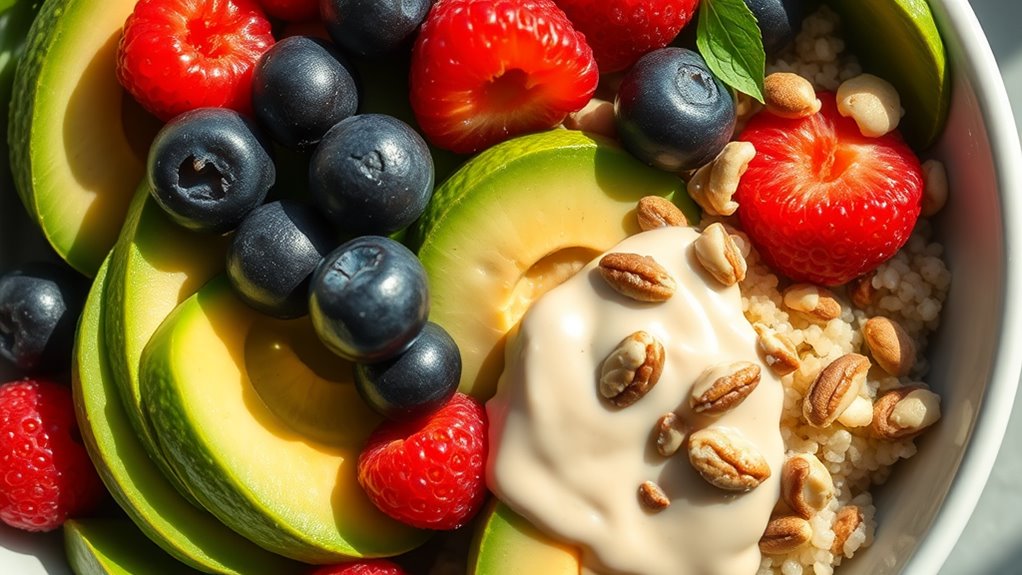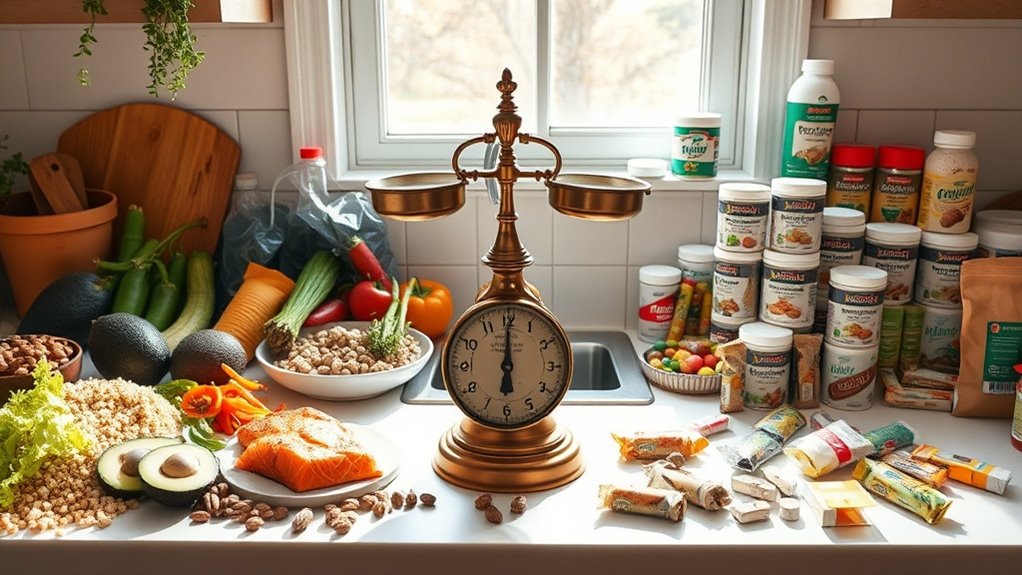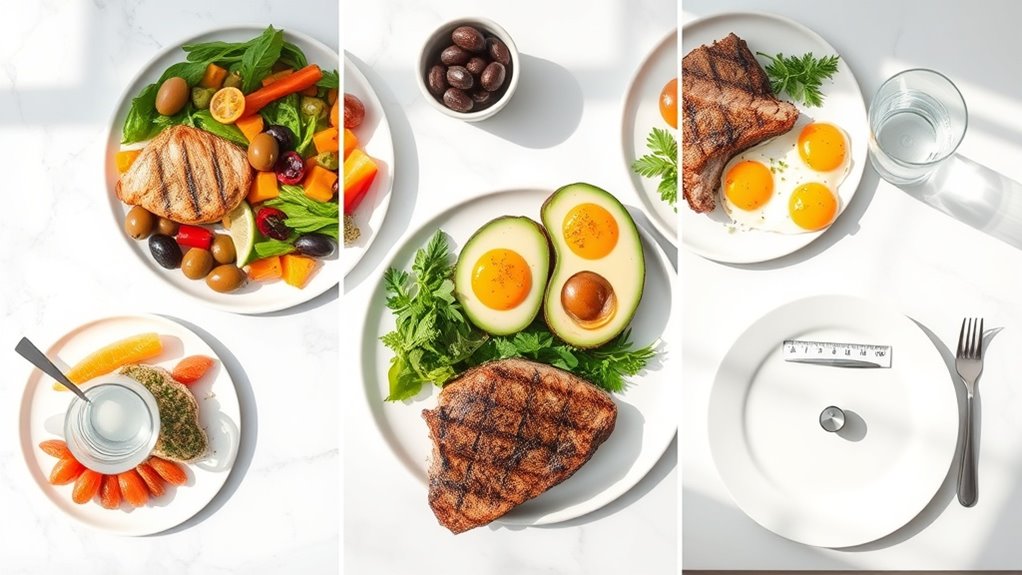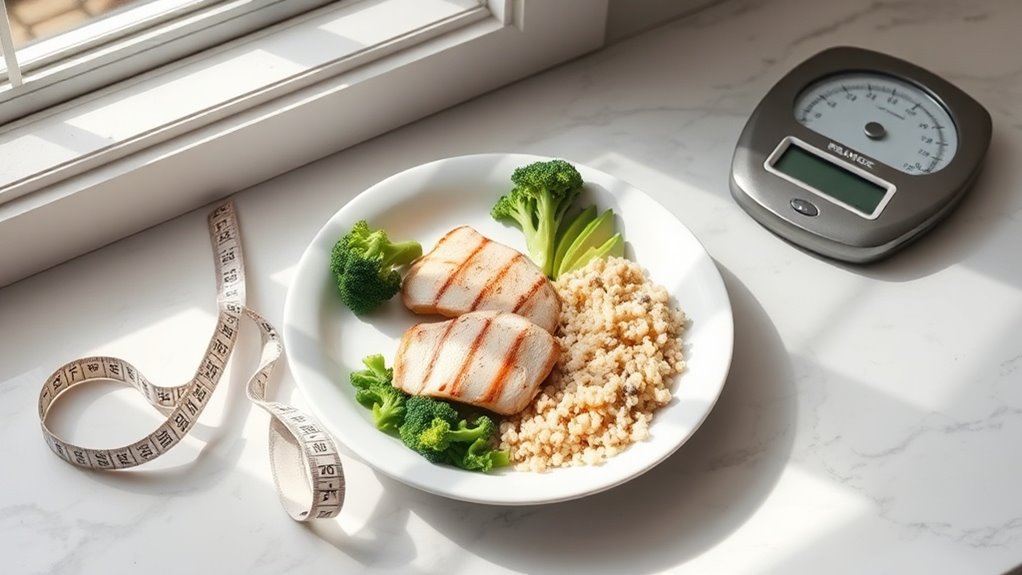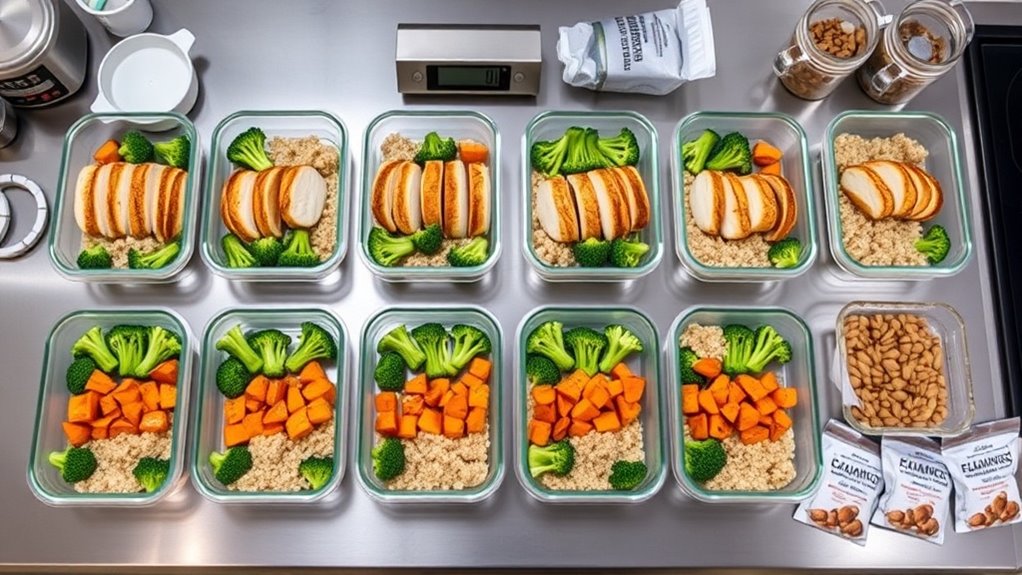These “Healthy” Foods Might Be Ruining Your Diet
These “healthy” foods, like granola and fruit juices, often hide excessive sugars and calories that can sabotage your diet. Low-fat products might mislead you with artificial additives, while whole wheat bread can vary in its health benefits based on ingredients. Snack bars can be sugary and calorie-dense, just like avocados if consumed in large portions. Understanding the true nutritional content of these foods is key. There’s more to uncover about these surprising diet pitfalls.
Granola: The Hidden Sugar Trap
Although granola often gets branded as a health food, it can silently sabotage your diet due to its hidden sugar content.
Many brands contain high levels of added sugars, which can lead to excess calorie intake. When you’re focusing on weight loss, consider granola as one of the foods to avoid for weight loss. Cutting out sugary drinks can significantly aid in burning fat faster and help you stay on track.
Opt for unsweetened versions or healthier alternatives instead.
Fruit Juices: Liquid Calories in Disguise
You might be surprised to learn that fruit juices often contain high levels of sugar, which can significantly increase your calorie intake without providing the same nutrients as whole fruits.
Many people underestimate the portion sizes they consume, leading to a false sense of healthfulness. Additionally, liquid calories can lead to energy crashes and cravings, further undermining your diet efforts.
High Sugar Content
While many people perceive fruit juices as healthy options, it’s crucial to recognize that they can be packed with high sugar content that may sabotage your diet.
A standard serving can contain the same amount of sugar as soda, leading to excess calorie intake without the benefits of fruit fiber.
It’s essential to opt for whole fruits to maintain better blood sugar control.
Nutrient Loss Factors
Fruit juices may seem like a healthy choice, but they often come with hidden downsides that can diminish their nutritional value.
Here are some factors contributing to nutrient loss:
- Pasteurization removes beneficial enzymes.
- Oxidation decreases vitamin content.
- Sugar concentration can overshadow health benefits.
- Lack of fiber increases caloric intake.
- Packaging may introduce harmful chemicals.
Be mindful of these aspects before reaching for that juice!
Portion Size Misconceptions
Consider that an 8-ounce serving of fruit juice can contain as much sugar as two whole oranges, making portion sizes tricky to navigate. Many people don’t realize that liquid calories can lead to overconsumption. Here’s a quick look at the differences:
| Drink | Sugar Content (grams) | Whole Fruit Equivalent |
|---|---|---|
| 8 oz Orange Juice | 22 | 2 Oranges |
| 8 oz Apple Juice | 24 | 2-3 Apples |
| 8 oz Grape Juice | 36 | 3-4 Grapes |
Low-Fat and Fat-Free Products: The Deception of Healthiness
Many people turn to low-fat and fat-free products in hopes of making healthier dietary choices, but this strategy can backfire.
These alternatives often contain:
- Higher sugar levels
- Increased artificial additives
- Lower satiety, leading to overeating
- Misleading marketing claims
- Nutritional deficiencies
Additionally, relying solely on these products may lead to a lack of nutrient-dense foods, which are essential for supporting satiety and minimizing cravings.
Whole Wheat Bread: Is It Really Better?
When you choose whole wheat bread, you might think you’re making a healthier option, but it’s important to consider its nutritional content compared to white bread.
The glycemic index can also vary, affecting your blood sugar levels and overall health.
Plus, many processed whole grain products lack the benefits of true whole grains, which you should keep in mind as you make your choices.
Nutritional Content Comparison
Whole wheat bread often gets touted as the healthier choice over white bread, but is it really better for your diet?
Here’s a quick comparison of nutritional content to consider:
- Higher fiber content
- More vitamins and minerals
- Lower in refined sugars
- Contains antioxidants
- Slightly more calories
While it can be more nutritious, always check labels, as some brands may add extra sugars or preservatives.
Glycemic Index Impact
The glycemic index (GI) is a vital factor to consider when evaluating whether whole wheat bread is a better option for your diet. While it generally has a lower GI than white bread, it can still spike your blood sugar. Here’s a comparison to help you decide:
| Food | Glycemic Index |
|---|---|
| White Bread | 75 |
| Whole Wheat Bread | 71 |
| Rye Bread | 64 |
| Pita Bread | 57 |
| Oat Bread | 49 |
Processed vs. Whole Grain
While many people assume that whole grain options, like whole wheat bread, are always healthier than their processed counterparts, it’s important to dig deeper.
Consider these points:
- Fiber content can vary significantly.
- Added sugars may be hiding in whole grain products.
- Portion size tends to be overlooked.
- Nutrient density isn’t always higher.
- Processing methods affect health benefits.
Make informed choices for your diet!
Snack Bars: The Nutritional Minefield
Although snack bars are often marketed as healthy options, they can conceal a surprising number of hidden sugars and unhealthy additives.
Many brands use sweeteners and preservatives that negate their nutritional benefits. Always check the label for ingredients and nutritional information.
Some bars can contain as much sugar as candy, so it’s crucial to choose wisely to truly support your diet. Additionally, many healthy snacks contain hidden sugars that can accumulate quickly, undermining your weight management efforts.
Avocado: The High-Calorie Wholesome Food
Snack bars aren’t the only culprits in the realm of seemingly healthy foods that can derail your diet.
Avocados, though nutritious, are calorie-dense. Here’s what to watch out for:
- High in calories (about 250 per fruit)
- Fat content (mostly healthy, but still significant)
- Portion size matters
- Can lead to mindless snacking
- May overshadow lower-calorie options
Balance is key! Enjoy in moderation. Additionally, being mindful of portion control can help you enjoy avocados without overindulging.

